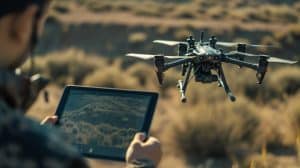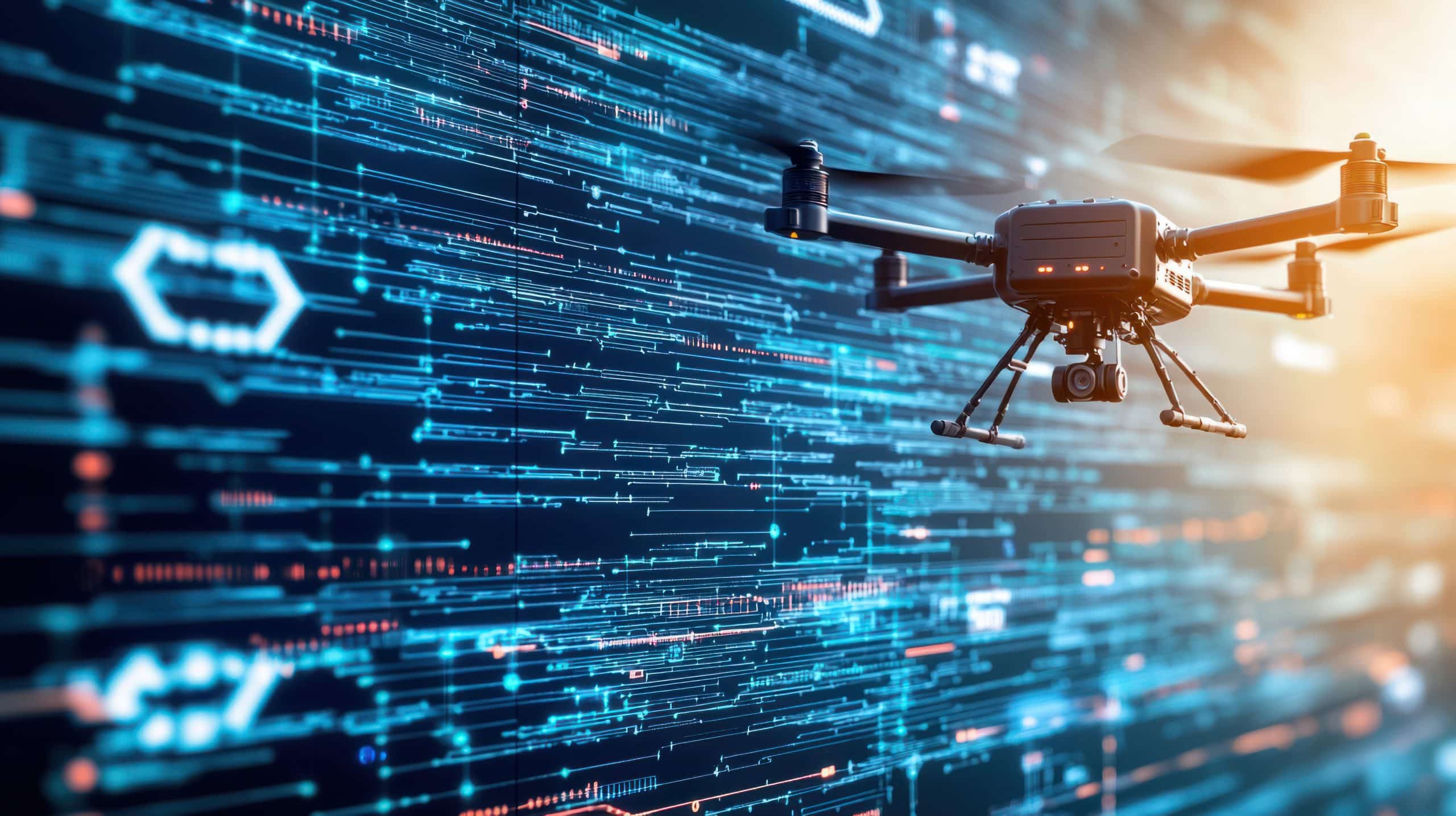The Foundation of Precise Drone Video Encoder Operation
A drone video encoder is a small but vital part of any modern unmanned aerial vehicle (UAV). It transforms motion into electrical signals that guide the drone’s movements and keeps it stable – especially during complex tasks.
Without encoders, a drone is flying blind. And for defense and situational awareness missions, that’s not an option.
Decoding Motion: Understanding What UAV Video Drone Encoders Are
When a UAV is in the air, every micro-adjustment makes a difference. Drone encoders help the UAV hover without drift, follow exact paths, and maintain its trajectories. Precision is necessary.
That’s where miniature UAV encoders come in. A drone encoder measures rotational and linear position changes, and provides instant feedback to the UAV’s flight control systems. Encoders are compared to the drone’s inner ear – constantly adjusting to maintain balance and direction. The constant feedback allows the aircraft to respond to environmental changes, operator commands, and mission objectives with high fidelity.
Key Advantages of Mini UAV Encoders
Encoders support gimbal stabilization, precise navigation, and motor control. Here is how:
Smooth Video Footage and Stable Payloads with Gimbal Control
Shaky drone footage is often a sign of poor gimbal control. Drone video encoders help stabilize the gimbal, which keeps cameras and sensors aligned even in turbulent conditions. For example, a military drone flying at 60 mph in windy conditions can still transmit clear video — thanks to encoder-controlled gimbals.
Precise Navigation for Better Autonomy in Military Applications
Encoders provide the feedback loop that allows autonomous UAVs to make real-time decisions. Whether tracking a moving target or patrolling a restricted area, mini-UAV encoders help keep them on course. In GPS-denied environments – like inside buildings or tunnels – encoder data is often the most reliable positioning source.
Motor Control: Ensuring Reliable and Responsive Movement
Drone motors need video encoders to issue precise instructions to help them operate accurately. Encoders ensure smooth motor acceleration, controlled deceleration, instant stops, and directional changes. Control is especially important when drones need to hover, hold position, or switch direction quickly – like during search-and-rescue missions or obstacle avoidance.

Diverse Applications: From Military to Situational Awareness and Inspection Drones
According to a MarketsandMarkets report, the UAV market is expected to grow from $30.2 billion in 2024 to $48.5 billion by 2029, driven mainly by military and surveillance applications.
These applications include:
Defense and Tactical Operations
Military drones rely on UAV video encoders for stable surveillance, target acquisition, and secure communications. Whether used for reconnaissance over hostile terrain or in combat zones, encoder-driven control systems enable steady flight in variable conditions, accurate sensor alignment for targeting systems, and coordinated maneuvers during autonomous missions.
For example, during intelligence, surveillance, and reconnaissance (ISR) missions, drones must maintain a fixed line of sight to monitor ground movements. Miniature UAV encoders make sure the gimbal and flight systems stay locked on the target, even if the drone shifts from its position or encounters turbulence.
Situational Awareness and Public Safety
Homeland security teams regularly utilize drones for crowd monitoring or disaster response situations. Encoders help the UAVs deliver stable video feeds for real-time decision-making, maneuvering assistance in complex areas, and reliable control when visual line of sight is limited.
Critical Infrastructure Inspection
Industries such as energy, transportation, and telecommunications increasingly deploy UAVs to inspect assets like power lines, bridges, pipelines, and towers. In these scenarios, encoders allow precise hover positioning near sensitive structures, smooth navigation around obstacles, and stable imagery for automated defect detection.
For example, a drone inspecting high-voltage transmission lines must maintain a precise distance and angle for its sensors to detect anomalies. Video encoder feedback enables that level of micro-adjustment and flight stability – especially important in windy or electromagnetically noisy environments.
Border Control and Perimeter Security
Government agencies and private security firms use drones for wide-area surveillance and perimeter monitoring. Encoder-enhanced UAVs are ideal for this purpose, offering low-latency camera tracking across large zones, automated patrols with waypoint precision, and consistent operation in adverse weather or low light. In these cases, encoders ease operator workload while increasing the reliability of automated monitoring systems.
Built to Endure: Ruggedization and Environmental Resilience
Military UAVs frequently operate in hostile conditions, from scorching deserts to freezing altitudes. Encoders must offer temperature resilience, shock and vibration tolerance, and long-term reliability.
Maris-Tech’s drone video encoders are engineered explicitly for these demanding environments, delivering robust performance in compact form factors.
Key Considerations When Selecting a Miniature UAV Encoder
Not all encoders are created equal.
Choosing the right mini-UAV encoder requires evaluating several key criteria:
| Specification | Relevance |
| Form Factor | Must support compact UAV designs |
| Weight | Affects endurance and payload capacity |
| Resolution | Drives accuracy in navigation and gimbal systems |
| Durability | Meets military-grade performance needs |
| Power Consumption | Influences battery life and mission duration |
Maris: Enabling the Next Generation of UAV Capability
One standout product is the Jupiter Nano by Maris. Designed specifically for defense, security, and advanced surveillance applications, Jupiter Nano delivers exceptional performance in a compact 25.4mm form factor – making it an ideal solution for size- and weight-constrained UAV platforms.
Despite its small footprint, Jupiter Nano integrates powerful capabilities, including a dual-channel H.264/H.265 codec that supports simultaneous multi-streaming. This means it can capture, encode, decode, and display multiple video and audio streams in real time, without compromising quality or speed. To learn more about video encoders for military and surveillance drones, contact us here.


